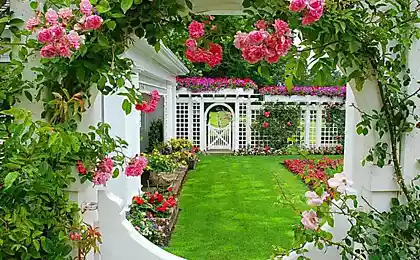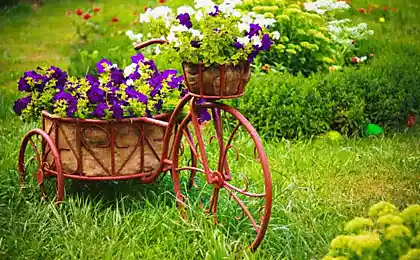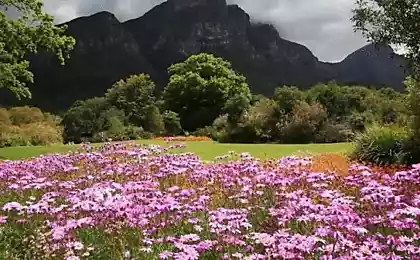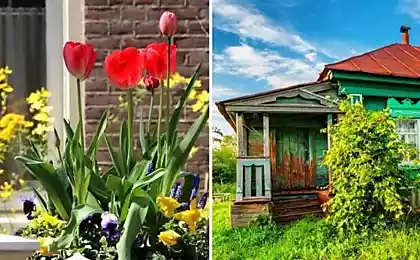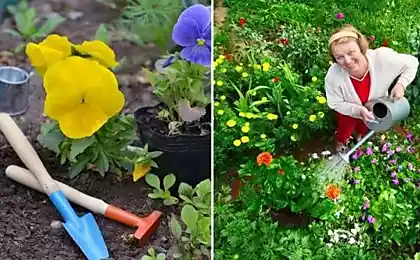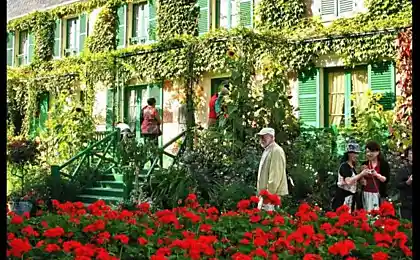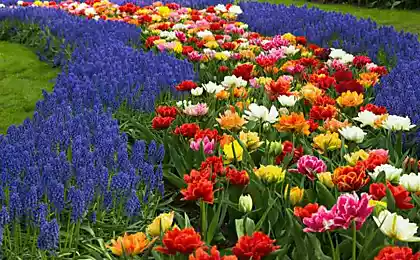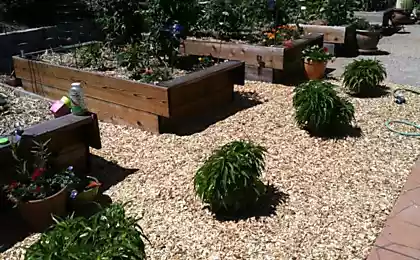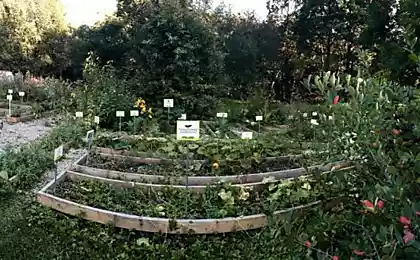533
What works on the site, in the fruit garden, vegetable garden and flower beds to hold in the autumn
So ended the summer, and things on the site, in the fruit garden, the vegetable garden and the flower beds have not diminished. Have a lot to catch in this season, so as not to regret the losses in the following.
On the site
P. S. And remember, only by changing their consumption — together we change the world! ©
Join us in Facebook , Vkontakte, Odnoklassniki
Source: 101dizain.ru
On the site
- Shape living hedges, and evergreen shrubs, trim them one last time this season.
- From grafted plants (roses, hydrangeas, lilac, etc.) to cut wild growth (not just at the surface of the soil, and dig out the root neck).
- Faded flowers of roses, do not remove, cut them to shelter for the winter. Pruning will stimulate new shoots, and now it is undesirable to have matured already available.
- If desired, you can plant conifers, heathers and deciduous shrubs. The chance for a successful landing increases with the acquisition of seedlings with closed root system.
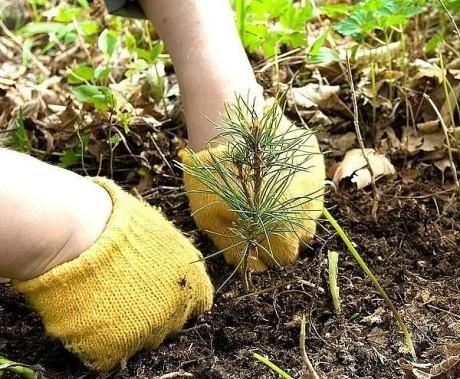
Fall planted conifers are well accustomed - Collect and compost fallen leaves.
- Card lawn rake, removing dead grass. Bald spots will vzryhlite and sow again, pour. Lawn grass keep mowing.
- For cover heat-loving perennials collect dry leaves of oak, birch and other woods, put into bags and store in a dry place until use.
- For the preparation of soil mixtures, gather pine needles, larch.
- If the site is located on a slope, do it across the slope of the groove and earthy cushions, the result is reduced flushing of the soil.

The sweep of the lawns from fallen leaves — autumn is necessary and obligatory procedure
- Collect ripened pears, apples, plums, hawthorn, nuts, sea buckthorn, ash, etc., recycle or put in storage.
- From the trunks of the trees, freed from the fruit, remove the trapping zone. Gently remove the lichens, dead bark, which often overwinter pests, burn. The fork of large tree branches clean, rinse with a solution of copper sulphate.
- Sanitary pruning guide, cut a ring of dried, broken or diseased branches. Thickening crown branches don't touch until spring. Let the slices dry day, the next day zamazhte garden pitch.
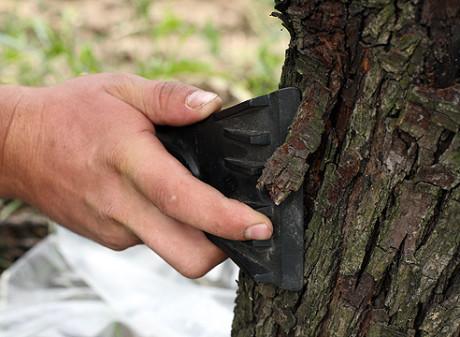
The cleansing of the trees from dead bark - On Apple and pears primanita actively growing young shoots, so they have time to ripen before the frost.
- Gather all the fallen, from the trees took off mummified and rotten fruit, remove from the site.
- If you are going to add a new garden to plant fruit bushes or trees, prepare planting holes in advance.
- Plant woody cuttings of red and black currants for reproduction. Previously laid horizontally shoots formed from the above-ground part and root system, divide and transplant to a permanent place.
- Buy plants in nurseries or garden centers with a good reputation, be sure to find out (better record) grade and main characteristics. Purchased on the market a seedling can be very frustrating when they start to bear fruit, remember that.

The collection of wild plants — the key to a healthy garden
- Gather the harvest of peppers, tomatoes, eggplant, etc., recycle (freeze, can, use as food).
- If pumpkins were not planted plates to prevent podgnivaniju, do it.
- Dried cucumber, remove the whip, and the tops of the tomatoes. The vacant place sow radishes or dill, for Nov get fresh greens.
- At the end of the month to plant winter garlic and onions-ovseiko (sets of diameter less than 1 cm, which is not until the spring dolerit).
- After the first light frost to start harvesting cabbage.
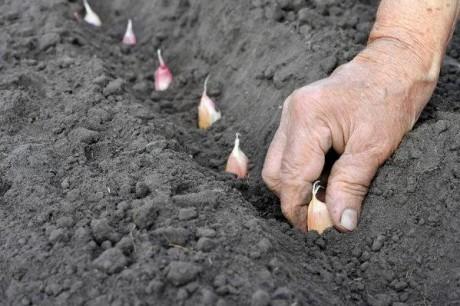
Planting winter garlic
- Remove lost decorative annuals.
- Seedlings of biennials (Pansy, forget-me-nots, sweet Williams, daisies, mallow, etc.) will be transplanted to the permanent location, observing optimal for each distance. Landing pour (preferably with the addition of fitosporin-M), the soil over mulch.
- Overgrown perennials, the flowering of which occurs in spring and early summer (periwinkle, bleeding heart, bergenia, arabis, daylilies, Hosta, astilbe, iwanicki, etc.), divide and sit down. Landing think, imagine how they will look with growing plants, you get a winning composition.
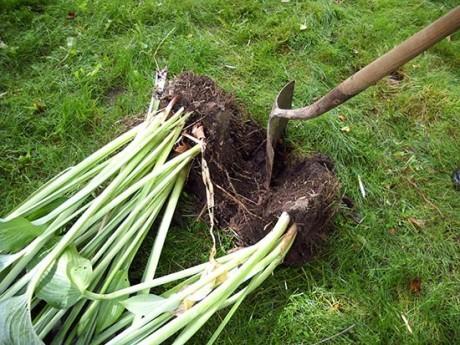
Divide and transplant overgrown perennials (pictured host) - Late-flowering chrysanthemums can be transplanted into containers as possible while maintaining the integrity of the earthen coma. Placing them in a cool room or unheated porch will be a long time to enjoy the bright colors and smells characteristic bitter flavor (by the way, useful).
- Have faded perennials (rudbeckia, Phlox, daylilies, astilbe, Echinacea, coreopsis, etc.), remove the stems and dead leaves. Yellowed stalks of lilies completely cut off. The leaves of irises shorten to 15 cm, bare rhizomes, cover them with soil. The leaves of peonies cut off, leaving stumps of 5-6 cm, so as not to inadvertently tear up the bearings. Pour the perennials with a solution of a fungicidal drug, a better biological action, to prevent root rot.
- Dig up tuber, bulbotuber, bulbs (Calla lilies, begonias, gladiolus, tuberose, Dahlia, incarvillea, etc.). Let the leaves fully dry up, then remove them. Treat tubers, corms, bulbs solution preparation Maxim, dry, define the storage in a suitable place.
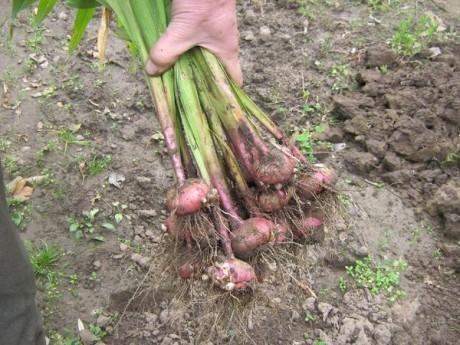
Dug clubdelicacy before storage, you must process (photo gladiolus) - Collect seeds of favorite annuals (Tagetes, heirloom petunias, gazania, etc.), let dry and lay on a paper bag, sign it.
P. S. And remember, only by changing their consumption — together we change the world! ©
Join us in Facebook , Vkontakte, Odnoklassniki
Source: 101dizain.ru
Porsche and Audi will compete with Tesla
'The Alternative': The Brake That Will Make Firearms Less Lethal








